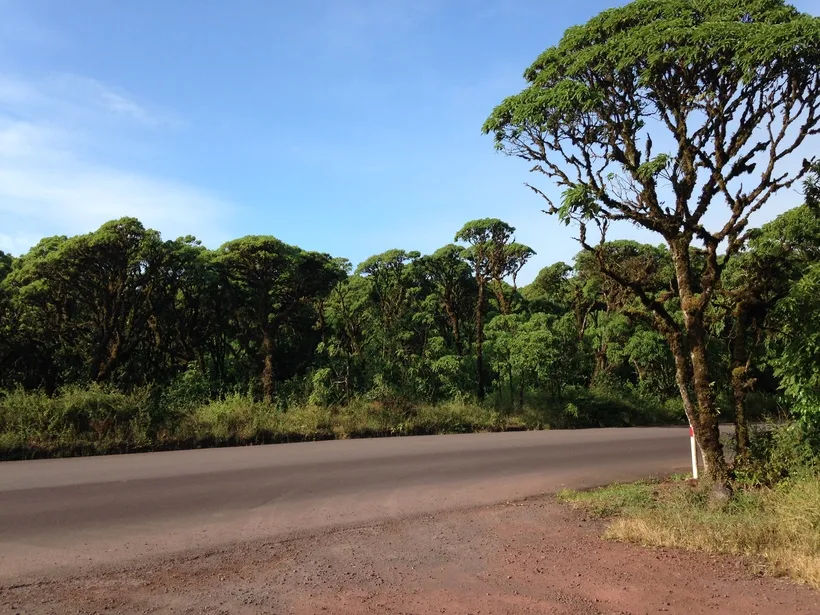The legendary archipelago, the unique reserve of the world biosphere and the main tourist attraction of Ecuador - all these are the Galapagos Islands, which got their name from a special variety of giant land tortoises Galapago. The islands form an archipelago of volcanic origin, located 972 km. from Ecuador. The age of the Galapagos Islands is very impressive, the first islands of the archipelago were formed 5 - 10 million years ago as a result of tectonic activity. The youngest islands are Isabela and Fernandina, which are still at the formation stage.
 |
| Galapagos Islands |
The islands are part of the province of Galapagos, their total area is 8010 km², and the population is 25,124 people.
The Galapagos is primarily associated with the name of Charles Darwin, who, having been here, created his famous theory of evolution and the origin of species.
 |
| Galapagos Islands |
The Galápagos officially appeared on the world map in 1535, when the Spanish priest Thomas de Berlanga accidentally stumbled upon them on his way from Panama to Peru.
In 1832, Ecuador annexed the islands, and in 1835 Charles Darwin visited here as part of a naval expedition and explored their flora and fauna.
It is interesting to trace the evolution of the regalia of the islands. In 1936, the Galapagos was declared a National Park, in 1978 a UNESCO World Heritage Site, and in 1985 a World Biosphere Reserve.
How to get to the Galapagos Islands
You can get to the islands through Guayaquil, the flight takes about two hours. Flights to the Galapagos are operated by various airlines, among which are Tame, Avianca and LAN. The cost of the flight Guayaquil - Baltra - Guayaquil is quite high and varies from 300 to 600 US dollars.
From Quito, Ecuador, there are direct flights lasting 2 hours and 10 minutes. With a transfer, fly at least three and a half hours. Flights are operated by Avianca and LATAM.
The main airport of the archipelago is located on Baltra near the main island of the Santa Cruz archipelago, where most airlines fly. There is also an airport on the island of San Cristobal, but air communication with this island is not so well developed, planes do not fly there every day.
For the privilege of going to the Galapagos, you will have to pay a tourist tax of 100 US dollars (only cash is accepted!), In addition, when departing from Guayaquil, they charge an additional 10 dollars per person. Such a policy of the government of Ecuador is aimed primarily at the preservation of the reserve and maintaining its uniqueness and exclusivity. Otherwise, the Galapagos would have long ago turned into a mass destination and would have lost their secluded charm.
 |
| Galapagos Islands |
Consider the options for transport from Baltra Airport. Having paid the tourist tax and received your things, when leaving the airport, you should take a free bus, which will take you to the Itabaca Canal in 10 minutes, where ferries are already waiting for tourists. For 10 minutes and 80 cents (all prices are as of March 2014), the ferry will take you to the main island of the Santa Cruz archipelago. Next, to get to the city of Puerto Ayora there are two options.
On the bus, which costs $1.80. and it takes more than an hour or a taxi for $18 and forty minutes.
It should be noted that the commonplace statements about the unprecedented high cost of the islands are just a myth, a really expensive vacation can only be obtained here in the cruise format. If you independently move between the islands and look for economical housing on the spot, then it is quite possible to meet an acceptable amount and not damage your budget.
 |
| Galapagos Islands |
Cruises to the Galapagos Islands
You can also explore the Galapagos Islands as part of cruises that offer different programs and routes. It is clear that this is a much more expensive pleasure compared to an independent trip based on the three main islands of the archipelago, but cruises have an undeniable advantage - some islands (for example, Genovesa, Fernandina, Hispaniola ) can only be reached in this format.
Climate of Galapagos
The proximity to the equator and the cold Humboldt current largely determined the specifics of the climate of the islands. It is much cooler here than in other places near the equator, and the water temperature averages + 20 degrees.
The islands can be visited throughout the year, but the months of February and March are traditionally considered the best period to visit here, when the water warms up to +23 - +25 degrees and is comfortable for swimming and snorkeling. The coldest months on the islands are June, July and August, and the ocean usually storms during this period.